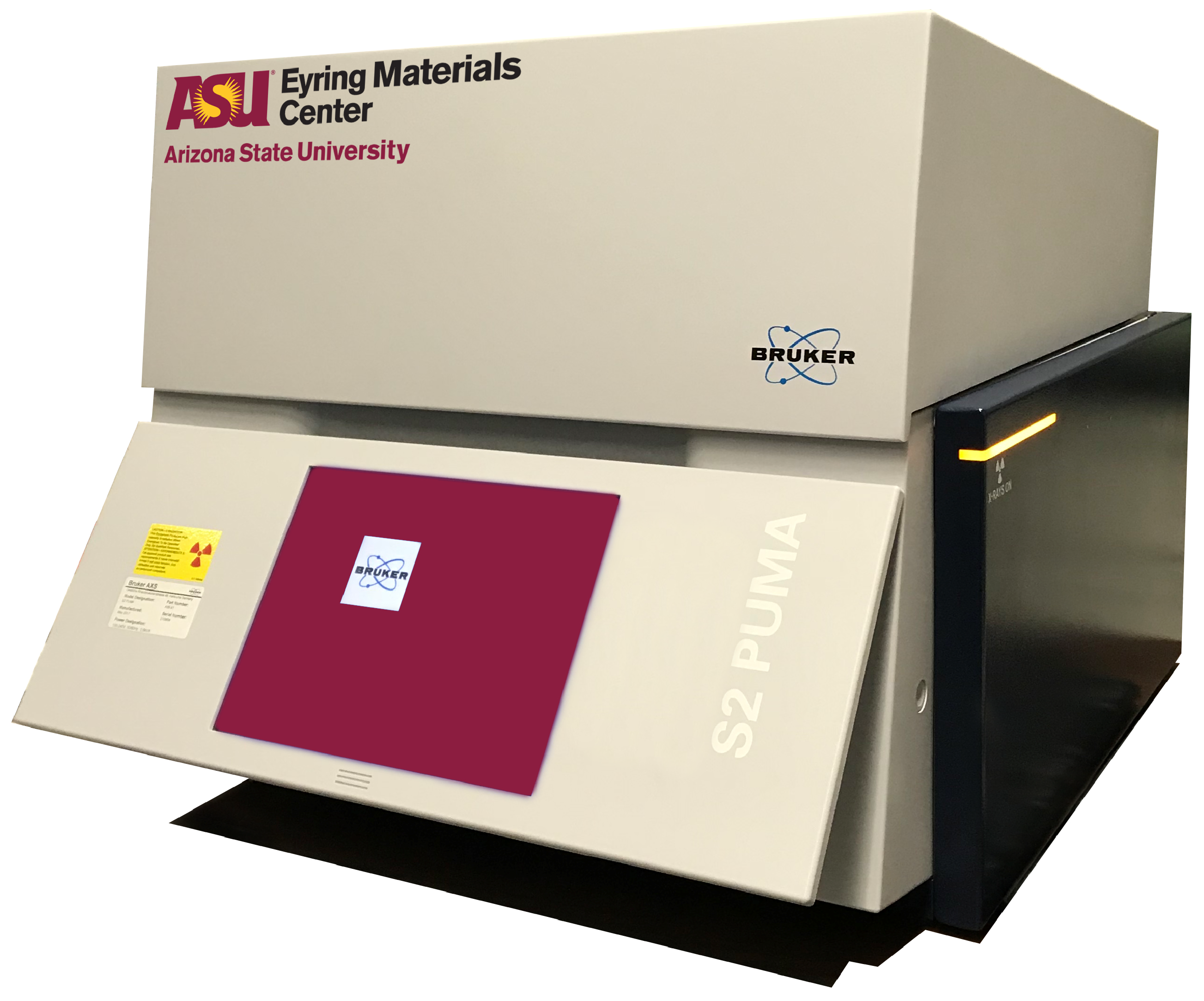X-Ray Fluorescence Spectroscopy (XRF) is a technique used to determine chemical composition by exciting sample material through bombardment with x-rays. The Bruker S2 PUMA is a state-of-the-art energy dispersive (ED) system equipped with a detector optimized for light element detection. Where the typical range of elements for an ED-XRF system is sodium through uranium, this detector extends the range down to carbon.
The aim in XRF is to eject electrons from the k, l, and m shells of an atom; creating vacancies that are filled by higher shell electrons. This transition results in a lower energy state for the transitioned electron. In accordance with the law of conservation of energy the difference in energy states is released in the form of an X-ray photon. Each element has its own unique shell structure. This results in only specific energies of X-rays that can be emitted by each element; termed “characteristic X-rays.” It’s by these characteristic X-rays that we determine qualitatively what elements are present in a sample. Quantification is achieved by comparing the detected levels of these X-rays to those of a highly characterized sample of similar composition and structure, known as standard reference material (SRM) or simply “standard(s).”
Contact
METAL_ASU@asu.edu
- X-ray fluorescence
| Cost for ASU Internal | Cost for ASU Internal with Staff Assistance | Cost for Other Academic/Non-Profit | Cost for Other Academic/Non-Profit with Staff Assistance |
|---|---|---|---|
|
$35.70/h
|
$78.75/h
|
$105.00/h
|
$201.60/h
|


